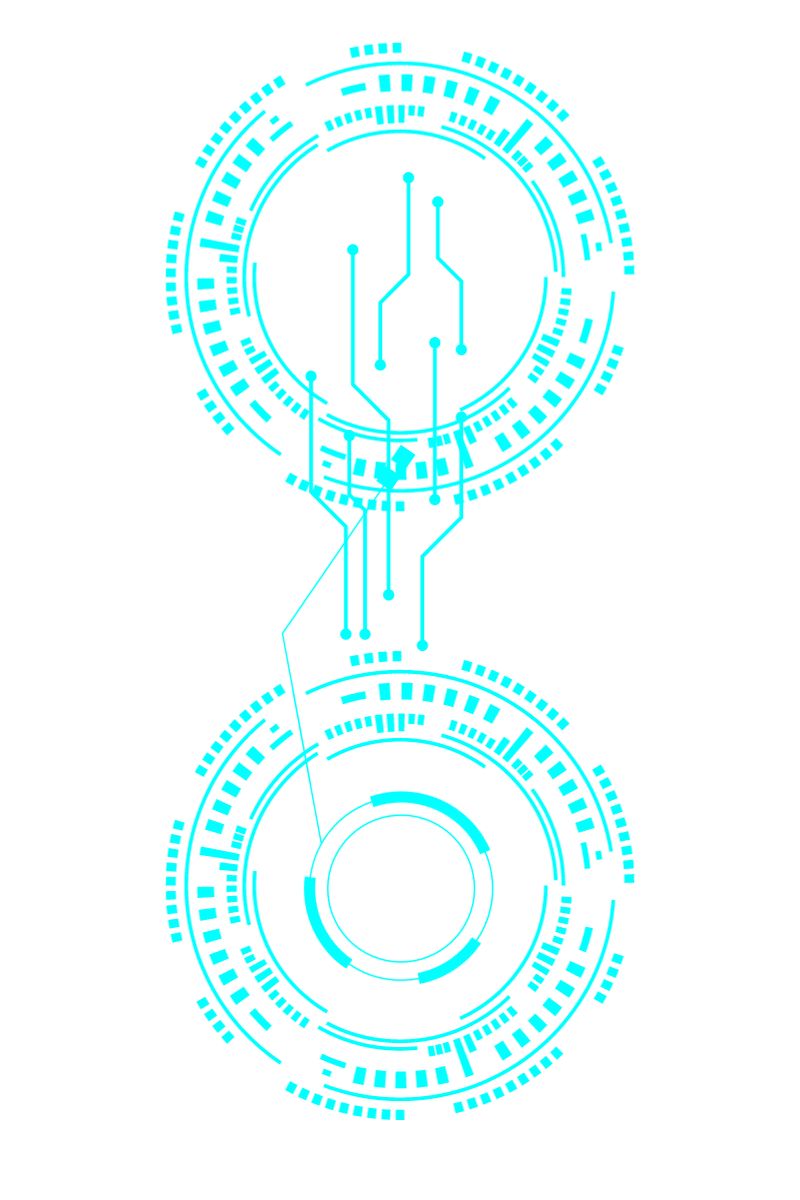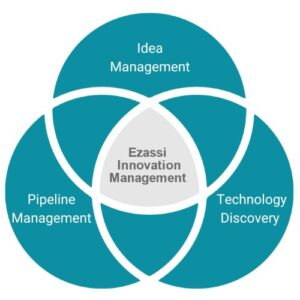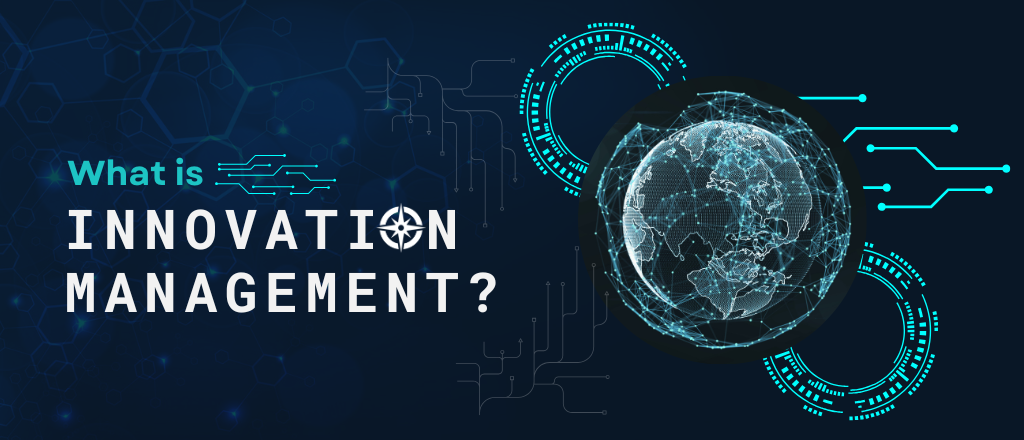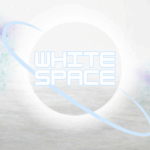Navigating Innovation Management:
Implement a Scalable Process and Engaging Platform for Enterprise Ideation and Collaboration Creating Open Innovation Solutions
Regardless of your organization’s innovation portfolio size or scope, every business needs a strategy and competitive advantage for growth and technological advancement. Supporting an innovative culture and adopting an innovation management platform across your company assesses valuable KPIs of the current pipeline and promotes future opportunities through the transformative power of innovation.
But innovation management isn’t just a one-and-done task—it’s an ongoing, iterative journey. To truly harness innovation, organizations must continuously seek ways to improve and scale their ideas. This means actively gathering feedback from customers, employees, and stakeholders, then using those insights to refine current initiatives and guide future ones. Lessons learned—whether from triumphant launches or instructive failures—should be woven back into your processes, fueling adaptability and resilience.
Innovation management rarely follows a straight line. Stages may overlap or repeat, requiring flexibility and a willingness to adjust course as the landscape evolves. By embracing this cycle of continuous improvement, your organization is better equipped to foster meaningful change and sustain a competitive edge in a rapidly shifting marketplace.
Types of Innovation in Innovation Management
Innovation is not one-size-fits-all. Within innovation management, there are three core types of innovation—incremental, breakthrough, and disruptive—each with distinct characteristics and impacts.
- Incremental Innovation: This approach focuses on making small, continuous improvements to existing products, services, or processes. Think of it as giving a familiar tool a new, sharper edge: a grocery store adding self-checkout stations, or a phone app refining its interface with frequent updates. These steady enhancements help organizations remain competitive without radically altering their core offerings.
- Breakthrough Innovation: Unlike incremental changes, breakthrough innovation takes a significant leap forward within an established category. Imagine a new medical device that drastically improves diagnosis within its field, or a high-speed train that shortens travel time between two major cities. These advancements open up new possibilities and give companies a clear edge, but remain within the current market framework.
- Disruptive Innovation: This is the game-changer—the kind of innovation that creates entirely new markets or rewrites the rules of engagement in existing ones. Classic examples include the arrival of digital photography upending the film industry, or streaming services like Netflix transforming the way people consume television and movies. Disruptive innovations often start at the fringe, but when they take hold, they can rearrange the competitive landscape altogether.
Innovative Culture and the Innovation Manager’s Role
The Key Pillars of Innovation Management
Tools and Techniques for Innovation: Idea Management, Pipeline Management, and Technology Discovery Software & Innovation Services
The Benefits of Innovation Management
Defining Innovation Management:
Innovation management is the process of nurturing and guiding the development of new ideas, products, services, or processes within an organization. It’s the strategies, idea stage gate and workflows that move creative ideas, novel technologies, or key market insights through an efficient and transparent pipeline of challenge solvers and intrapreneurs to drive sustainable growth and gain a competitive edge.
Why is it significant?
Innovation management is necessary to be adaptable and resilient and to thrive in a rapidly changing world. By fostering a culture of innovation, organizations can stay ahead of the curve, adjust to market demands, and outshine their competitors.
But thriving in today’s market isn’t just about creativity—it also means embracing emerging technologies. Staying updated with advances like artificial intelligence, blockchain, the Internet of Things (IoT), and virtual or augmented reality can open entirely new pathways for growth and efficiency. Organizations that actively explore and leverage these technologies are better positioned to identify fresh opportunities, streamline processes, and deliver greater value to both customers and stakeholders.
By combining a forward-thinking mindset with technological awareness, innovation management becomes a dynamic engine for sustainable success.
But it doesn’t stop there. Innovation management is an ongoing process—one that requires organizations to continuously reassess and adapt their strategies. Keeping pace with shifting market trends, gathering feedback from customers, and learning from internal insights are all essential to staying at the forefront, not just in the present, but for years to come. By making innovation a consistent priority rather than a one-time project, organizations build the agility and foresight needed to succeed in 2023 and beyond.
Understanding ISO 56001 and Its Role in Innovation Management Systems
At the heart of robust innovation management lies a global framework: ISO 56001 . Developed by the International Organization for Standardization , ISO 56001 is the international standard dedicated to outlining the requirements for an effective innovation management system (IMS). Think of it as the playbook for organizations aiming to turn creative sparks into tangible results, all while maintaining strategic focus and measurable outcomes.
So, what sets ISO 56001 apart?
- Strategic Alignment: It encourages organizations to weave innovation seamlessly into their business vision and strategy, ensuring that creative efforts aren’t happening in a silo.
- Measurability: The standard places emphasis on clear metrics and performance indicators, so progress isn’t left to chance—leaders can track, assess, and optimize their innovation activities in real time.
- Cultural Integration: ISO 56001 recognizes that innovation thrives when it’s built into the organizational DNA, from leadership support down to frontline employees acting as intrapreneurs and challenge solvers.
Whether you’re a global retailer in Tokyo or a healthcare startup in Toronto , ISO 56001 applies across industries and organization sizes. Inspired by the success of quality ( ISO 9001 ) and environmental ( ISO 14001 ) management systems, this guideline helps companies cultivate a repeatable, scalable approach to developing new products, services, or processes.
In short, ISO 56001 provides the shared language and structure organizations need to nurture ideas from inception to implementation—ensuring innovation is not just a buzzword, but an ingrained capability that supports long-term growth and resilience.
Types of Innovation: Incremental, Breakthrough, and Disruptive
When it comes to innovation, not all ideas have the same impact. There are three Horizons that organizations should navigate:
- H1 (Incremental Innovation): Think of this as continuous improvement on what already exists. Near-term goals such as yearly model upgrades and user experience tweaks are incremental innovations for small but meaningful enhancements to existing products, services, or processes.
- H2 (Breakthrough Innovation): This is when a step change occurs—an advancement that significantly elevates an existing solution above the competition. Breakthrough innovations often emerge from research and development sprints and can propel a product or service into a new areas for growth in expanding markets.
- H3 (Disruptive Innovation): Disruptive ideas often begin at the margins and, over time, transform entire markets or industries. These long-term innovations fundamentally alter consumer behaviors and industry standards.
Understanding the Horizon framework helps organizations prioritize efforts and align resources to maximize both immediate gains and long-term impact with innovation management.
Learning from Global Innovation Campaigns
The field of innovation management is constantly growing, and much of what drives meaningful progress comes from the hard-earned lessons gathered during large-scale innovation campaigns worldwide. By looking at international examples—from Unilever ’s open innovation challenges to the iterative hackathons powered by Google and IBM —organizations can adopt proven strategies and avoid common pitfalls.
Examining these campaigns provides valuable insights, such as:
- Structured Approaches: Global campaigns often lean on frameworks like ISO 56001 to bring both consistency and flexibility, ensuring that processes are adaptable while still meeting international standards.
- Cross-Industry Best Practices: Whether it’s the fast-paced tech sector or highly regulated industries like pharmaceuticals, successful organizations share key traits: effective stakeholder engagement, robust evaluation methods, and agile rollout plans.
- Data-Driven Decision Making: Campaigns conducted at scale generate enormous amounts of feedback and performance metrics—critical for refining ideation processes, pinpointing roadblocks, and scaling up what works.
- Collaborative Learning: Bringing together diverse perspectives through open calls and crowdsourcing tools helps broaden the innovation funnel. Lessons learned about team dynamics, communication clarity, and incentive structures can be directly applied to bolster your own strategy.
- Continuous Improvement: Reflecting on outcomes—both wins and misses—ensures the innovation engine never stalls. Successful campaigns embed agile feedback loops, enabling organizations to pivot quickly and build on what’s been learned.
By leveraging these real-world insights and adapting them to your organization’s structure and culture, innovation strategies become more robust, resilient, and ready to deliver sustainable growth.
Leveraging Agile Methodologies in Innovation Management
Embracing agile methodologies—like Scrum and Kanban —can inject new energy and adaptability into innovation management. Rather than following rigid, linear paths from idea to launch, agile approaches break projects into manageable, iterative sprints. Think of it as taking deliberate, confident steps instead of trying to leap across a canyon in one go. This culture of iteration means teams can quickly pivot, incorporate feedback, and fine-tune ideas as new information or market realities emerge.
Agile principles prioritize collaboration, frequent communication, and transparency, all of which dovetail perfectly with innovation’s need for experimentation and rapid learning. By regularly reviewing progress and resetting priorities, organizations can nimbly respond to unforeseen challenges, seize emerging opportunities, and accelerate time-to-market for new concepts. This not only keeps innovation efforts moving forward—it also boosts engagement, as everyone involved can see ideas evolving, taking shape, and delivering value in real time.
Ultimately, agile methodologies serve as a flexible backbone for innovation management, providing the structure needed to foster creativity without stifling it. By blending disciplined processes with adaptability, organizations can turn inspiration into implementation more smoothly—and with more organizational buy-in along the way.
Getting Started with ISO 56001 : Practical Steps
Embarking on the journey to implement ISO 56001 —the international standard for innovation management systems—can feel daunting, but it’s entirely achievable with a clear roadmap. Here’s how organizations can take concrete steps toward embedding this globally recognized framework into their innovation initiatives:
1. Familiarize and Align
Start by thoroughly reviewing the ISO 56001 standard itself, ensuring a shared understanding of its requirements across your leadership team. Involve stakeholders from various levels early on so the language and intent of ISO 56001 become part of your organization’s daily dialogue around innovation.
2. Assess Your Current State
Conduct a candid, organization-wide assessment to identify where your existing innovation processes align with ISO 56001 —and where there are gaps. Use proven templates or diagnostic tools (many developed by consultants and practitioners around the globe) to benchmark your current capabilities against the standard’s key pillars.
3. Define Scope and Objectives
Determine the scope of your innovation management system. Are you implementing ISO 56001 company-wide or starting with a department or pilot project? Establish clear objectives that fit your organization’s growth ambitions and market realities.
4. Build Core Capabilities and Structure
Set up the essential building blocks:
- Appoint a cross-functional team responsible for driving ISO 56001 adoption.
- Develop foundational policies and procedures that reflect the standard’s principles.
- Equip teams with training, resources, and access to external expertise, such as accredited innovation consultants or bodies like the International Organization for Standardization ( ISO ).
5. Integration and Communication
Embed the new innovation practices into your organization’s routines. Leverage regular communication, hands-on workshops, and feedback loops to keep innovation front and center. Transparency and open reporting help ensure everyone understands their role and the value of the new system.
6. Track Progress and Iterate
Utilize monitoring and measurement tools to track your implementation—review successes, document lessons learned, and make ongoing adjustments. Consider regular audits or self-assessments modeled after the ISO standard to help maintain momentum and realize continuous improvement.
This systematic, inclusive approach—paired with collaboration across roles and departments—sets a solid foundation for meaningful, scalable innovation management according to ISO 56001 .
Fostering an Innovation Culture Among Employees
A thriving innovation culture begins with support from the top, but it truly flourishes when every team member feels their contributions are valued. Encouraging employees to participate in the innovation journey means creating an environment where their ideas are welcomed, listened to, and taken seriously.
Organizations can further empower their teams by deploying collaborative tools like Ezassi’s Innovation Management software to make exchanging feedback effortless. This digital platform expands the conversation, allowing employees at all levels and even external partners to contribute insights. The result? A continuous influx of fresh ideas and a sense of ownership that fuels long-term innovation momentum.

The Importance of Investing in Continuous Learning
Continuous learning is the lifeblood of innovation. When organizations champion ongoing development—through training sessions, workshops, or simply encouraging curiosity—they empower employees to keep pace with evolving technologies and shifting market needs. This mindset not only builds individual expertise, but also ensures teams can adapt swiftly, turn failures into lessons, and confidently experiment with new approaches.
By nurturing this appetite for growth, companies position themselves a step ahead. Employees are emboldened to take smart risks, share discoveries, and contribute fresh thinking. Think of it as building a reservoir of creativity: the more people learn, the richer the well of ideas becomes. Companies like Google and 3M are prime examples—prioritizing learning and experimentation to fuel breakthrough products and industry shifts. Continuous learning, in short, is how you keep innovation thriving at every level of your organization.
What is the Role of an Innovation Manager?
An innovation manager acts as the linchpin for driving change and nurturing inventive thinking within an organization. They are responsible for leading cross-functional teams, overseeing the innovation pipeline, and ensuring that promising ideas progress smoothly from conception to implementation. Strong leadership, strategic vision, and the ability to inspire collaboration are essential qualities for this role.
Innovation managers also serve as facilitators, removing obstacles and championing new initiatives. They connect stakeholders, encourage open communication, and guide projects through each phase of the innovation process. Usually, our clients assign the Innovation Manager as one of the admins of the software system. Ultimately, their goal is to cultivate an environment both physically and digitally where creativity flourishes and impactful solutions are continually developed.
The Role of an Innovation Manager: Driving Creativity with Leadership
At the center of every successful innovation strategy is an innovation manager—a dedicated leader who cultivates creativity and translates these ideas into tangible results. The innovation manager doesn’t just oversee brainstorming sessions; they guide the innovation journey from inception to market launch, ensuring alignment with organizational goals along the way.
The essential skills for this role go far beyond traditional management capabilities:
- Visionary thinking: Innovation managers must spot opportunities where others see obstacles and inspire teams to stretch their creative boundaries.
- Collaboration and facilitation: Empowering cross-functional teams and breaking down silos, they encourage open dialogue and champion diverse viewpoints, just as Pixar or Google might foster collaboration.
- Strategic decision-making: With keen judgment, they prioritize ideas based on market trends, feasibility, and potential impact, then chart a clear course through the development pipeline.
- Change management: Adapting quickly, these leaders drive cultural shifts, helping employees embrace change and new technologies.
In essence, an innovation manager blends strategic leadership with a passion for discovery—serving as both conductor and catalyst to move great ideas forward within the organization.
The Importance of C-Suite Engagement in Innovation Management
While nurturing a creative culture and providing the right tools are crucial steps, true innovation thrives when leadership is visibly involved. So, why is C-suite engagement so critical?
First, executive support sets the tone from the top, signaling to teams that innovation isn’t just a trendy buzzword—it’s a core business priority. When the C-suite is actively engaged, employees feel empowered and motivated, knowing their ideas matter at every level of the organization.
Second, innovation initiatives often require significant investments—time, talent, and capital. Senior leaders ensure alignment between innovation efforts and broader business strategies, making it possible to secure the resources and remove organizational roadblocks. This top-down commitment helps transform scattered initiatives into a coherent, disciplined approach that yields measurable results.
Finally, leaders who champion innovation can bridge gaps across functional silos and reinforce accountability. Their involvement keeps innovation aligned with strategic objectives, accelerates decision-making, and brings the authority necessary to advance promising concepts from conception to implementation.
C-suite engagement doesn’t just provide air cover; it embeds innovation into the organization’s DNA—making it a routine, sustainable, and strategic part of business growth.

The Key Pillars of Innovation Management:
Ideation: This is the brainstorming phase where teams generate and capture a wide range of ideas. No idea is too wild or unconventional during this stage. It’s all about embracing creativity and encouraging diverse perspectives.
To make ideation truly effective, it’s essential that the organization fosters a genuine culture of innovation—where employees feel valued and empowered to contribute. When people know their ideas matter, they’re more likely to share innovative thoughts and take creative risks. Leveraging collaborative technologies, such as internal social platforms or digital suggestion boxes, can help gather feedback and spark participation from both inside and outside the company. By supporting open communication and providing opportunities for collaboration, organizations can ensure a steady flow of fresh, high-quality ideas.
Evaluation: Once the ideas are on the table, it’s time to separate the great, the possible, and the moonshot goals from the trite and unverified.
Rigorous evaluation methods help identify the most promising concepts while considering factors like feasibility, market potential, and alignment with the organization’s goals. This step is about disciplined selection: sifting through submissions to pinpoint those with real value and viability. Incentives and timely feedback during this phase can help maintain momentum and encourage further participation.
Measuring and Rewarding Innovation
To ensure the evaluation process drives meaningful progress, it’s critical to establish clear metrics for tracking and measuring innovation success. Examples include the number of new ideas generated, successful implementation rates, revenue from new products or services, customer satisfaction improvements, and enhanced employee engagement. By recognizing and rewarding employees who actively contribute to the innovation process, organizations create a positive feedback loop—motivating continued involvement and reinforcing the value of fresh thinking.
Business Case Development: Turning a Good Idea Into a Winning Investment
Once the stand-out ideas make it through the evaluation gauntlet, the next step is to build a compelling business case. Think of this as the bridge between potential and practice—a well-structured business case reassures stakeholders that an innovative concept isn’t just creative, but truly viable.
Developing a solid business case means doing your homework. Start by digging into market research: How big is the opportunity? Who are your competitors—think Apple , Tesla , or even that upstart in the adjacent industry? Next, lay out the numbers. Estimate costs for development and launch, project potential revenue streams, and identify both direct and hidden risks (no one likes surprises in a budget meeting).
It’s also crucial to show how the proposal aligns with your organization’s larger strategy. Will this new idea help your team meet growth objectives or strengthen your core brand? Mapping the potential benefits—whether it’s unlocking new markets, improving operational efficiency, or enhancing customer loyalty—can help leaders see the full value of the idea.
Finally, transparency is your friend. Highlight assumptions, acknowledge uncertainties, and present scenarios to illustrate both best- and worst-case outcomes. When leaders have the facts, they’re empowered to make informed decisions and commit the right resources to bring innovation to life.
Implementation
Once the best ideas are rated and promoted, it’s time to roll up the sleeves and transform ideas into reality. This phase involves strategic planning, resource allocation, and careful execution to ensure a smooth transition from concept to market-ready products or services. Often, organizations build prototypes or pilot programs as a way to test new ideas before full-scale deployment. This iterative approach helps mitigate risk and fine-tune innovations for the best possible outcome.
To support this critical phase, it’s essential to allocate dedicated resources—budget, time, and personnel—specifically for innovation activities. Establishing focused teams or even innovation labs gives these efforts the breathing room they need, allowing talented individuals to research, prototype, and test ideas without being pulled away by daily operations. By carving out space for innovation, organizations set the stage for bolder experimentation and more consistent breakthroughs.
Adoption and Diffusion: Even the most brilliant ideas can fall flat if they don’t gain traction. The adoption and diffusion period involves creating awareness, building buy-in across the organization, and effectively launching the innovation to the target market or audience. After implementation, it’s crucial to assess outcomes and measure whether the innovation has achieved the desired business goals. Regular evaluation and feedback loops ensure that innovation remains a repeatable, embedded part of the organization’s culture—not just a one-off event.
Once the innovation is officially launched, the real work continues. Marketing and sales efforts kick into high gear to maximize reach and impact. This is the time to keep a close eye on how the innovation performs in the wild: gather customer feedback, monitor key performance indicators (KPIs), and assess whether the innovation is truly meeting its objectives.
Based on these ongoing evaluations, be ready to make improvements or adjustments. Continuous learning from user responses and measurable outcomes not only enhances performance but also reinforces a culture where innovation thrives as a sustainable, organization-wide practice.
By treating innovation as an ongoing, cyclic process supported by culture, collaboration, and disciplined management, organizations set themselves up for continuous growth and creative success.

Tools and Techniques:
10 Best Practices for Innovation Management in 2023
Establishing a vibrant, future-forward innovation program requires more than good intentions. Here are ten essential practices to keep innovation running strong in 2023 and beyond:
Cultivate an Innovation-Friendly Culture
Set the tone from the top by nurturing a workplace where experimentation is encouraged, calculated risks aren’t punished, and smart failures are celebrated as stepping stones. Recognition programs, open discussion forums, and visible leadership support all help embed a spirit of innovation company-wide.
Stay Ahead with Emerging Technologies
Innovation leaders keep an eye on the technological horizon. Regularly explore advancements—from artificial intelligence and blockchain to IoT, AR, and VR—that can reshape how you solve problems or deliver value. Immersing teams in tech trends through workshops or partnerships ensures fresh ideas keep bubbling up.
Leverage Strategic Alliances
No organization is an island. Partnering with universities, research institutes, startups, or even competitors can inject new thinking, provide access to novel technologies, and open doors to emerging markets. These alliances can unlock resources and perspectives unavailable in-house.
Adopt Agile Ways of Working
Agile methodologies, such as Scrum and Kanban , support flexibility, fast-paced iteration, and customer-centric problem solving. Applying agile not only trims the fat from development cycles but also ensures innovations can pivot quickly as new challenges or opportunities arise.
Break Down Silos for Cross-Team Collaboration
Innovation thrives on multidisciplinary thinking. Foster collaboration across departments, geographies, and job functions by creating project teams that mix skill sets and backgrounds. Cross-pollination generates richer ideas and faster paths to creative solutions.
Champion Lifelong Learning
Build a robust learning ecosystem. From upskilling in data science to sponsoring hackathons or immersive workshops, equip your talent to grow alongside technology. Create space for curious minds to try, fail, and try again—because learning fuels sustained innovation.
Systematize Idea Collection and Review
The most valuable ideas don’t always come from the top. Implement a structured system that captures input from employees, customers, and partners. Use digital idea management platforms, internal competitions, or innovation jams to surface opportunities and fairly evaluate their merit.
Dedicate Resources to Innovation
Innovative ambitions falter without bandwidth and budget. Carve out time, funds, and talent specifically for testing bold concepts—whether through “20% time,” skunkworks teams, or dedicated innovation labs that operate outside the constraints of daily business.
Apply Design Thinking Principles
At the heart of every great innovation is a genuine customer challenge. Apply human-centered design frameworks to dig into user needs, ideate potential solutions, rapidly prototype, test, and iterate. Design thinking helps move innovation away from guesswork to solutions that stick.
Measure, Celebrate, and Improve
Track more than patents or launches. Monitor inputs (number of ideas generated), outputs (successful pilots), and outcomes (business impact, customer delight). Celebrate every win—large or small—to reinforce innovation’s value, and use lessons learned to refine your approach for future cycles.
By weaving these practices into your innovation strategy, your organization can navigate change, seize new opportunities, and ensure innovation is not just a one-time event, but a repeatable, rewarding journey.
Innovation management is not wishful, futuristic thinking; it requires a dedicated structure and thoughtful process control.
Luckily, there are several tools and techniques available to assist organizations in managing innovation effectively. These can include scheduled innovation labs, design thinking workshops, new technology research sources, innovation consulting services, subject matter outreach, crowdsourcing platforms, and innovation management software.
One particularly effective approach is embracing design thinking—a human-centered methodology that guides teams through empathizing with users, clearly defining problem statements, brainstorming creative solutions, building prototypes, and testing them for real-world feedback. By focusing on unmet customer needs and iterating through prototyping and testing, organizations can develop products and services that genuinely resonate with their target audience.
Blending these structured methods with collaborative tools ensures that innovation is not left to chance, but managed deliberately for consistent, impactful outcomes.
Innovation Management Software
Ezassi offers a combination of solutions which work in unison to support innovation departments. We refer to it as our triad of products for Innovation Management.
First, we offer Idea Management Software. Our idea collection and management platform offers a centralized solution for capturing and organizing ideas from your team. With our software, you can easily evaluate and prioritize ideas, streamlining the decision-making and implementation process.
Second, we offer an AI-powered scouting tool for Technology Discovery. With this software, you can discover new technologies and stay ahead of the competition by uncovering emerging trends, patents, startups, and university research around the world. This search tool provides valuable insights, helping you identify growth opportunities and new partnerships to gain a competitive edge.
Staying on the cutting edge isn’t just about knowing what’s out there—it’s about proactively embracing emerging technologies to fuel your innovation engine. Our platform enables you to keep pace with advancements such as artificial intelligence, blockchain, the Internet of Things (IoT), and virtual or augmented reality. By leveraging these rapidly evolving fields, organizations unlock new possibilities for growth, efficiency, and differentiation. Whether you’re tracking disruptive startups, analyzing global patent activity, or scouting university breakthroughs, our technology discovery tool ensures your innovation efforts are built on a foundation of current, actionable intelligence.
The third product is Pipeline Management Software. Easily manage your innovation projects with our customizable Kanban board. Our software enables you to track project progress, allocate resources, and ensure timely execution of your initiatives.
Together, this system of solutions working in unison across a collaborative team of problem solvers provides one platform for continuous innovation.

Innovation Program Services
Ezassi also has a variety of Innovation Consulting Services. We offer R&D assistance to identify disruptive technologies in your industry. We can also create Innovation Challenges for your business to crowdsource solutions across a global audience or focus solely and confidentially within curated internal project teams. Read more about these services below:
Develop a comprehensive innovation strategy and assist in tracking KPIs to measure innovation progress. To ensure your innovation initiatives are making an impact, we help establish clear metrics—such as the number of new ideas generated, successful implementation rates, revenue from new products or services, customer satisfaction, and employee engagement. We also support recognition programs to reward employees who make significant contributions to the innovation process, helping to foster a culture where creativity and progress are celebrated.
Innovation Strategy Solutions:
Develop a comprehensive innovation strategy and assist in tracking KPIs to measure innovation progress.
Technology Discovery and Market Analysis:
Conduct in-depth technology discovery and market analysis reports to enhance R&D and Engineering efforts.
Innovation Program Management:
Ensure successful implementation of your innovation initiatives, providing ongoing support and progress monitoring.
Benefits of Innovation Management:
Now that you have an understanding of what innovation management is and the techniques innovative companies are adopting, let’s explore why it’s worth implementing into your business. Innovation management can:
- Drive growth and profitability:
By continuously innovating, organizations can tap into new markets, attract new customers, and boost their bottom line. - Foster employee engagement and satisfaction:
A culture that values and encourages innovation empowers employees, making them feel valued and motivated to contribute their best ideas. Contributors are proud to take ownership for encouraging positive change and technological advancements within the organization. - Enhance customer experience:
Innovation can result in the creation of products, services, or processes that address customer pain points, providing exceptional experiences that keep customers coming back for more.
Innovation management holds tremendous potential to revolutionize businesses of all sizes and industries. By nurturing a culture of innovation, organizations can unlock their true creative potential, surmount challenges, and remain relevant in an ever-evolving marketplace.
If your team is ready to unlock endless possibilities through improved innovation management, contact us to create a prosperous and exciting future!
Learn More






